He might’ve not been the King of the Jungle, and he might have had the tip of his front horn missing, but this black rhino still believed he was boss.
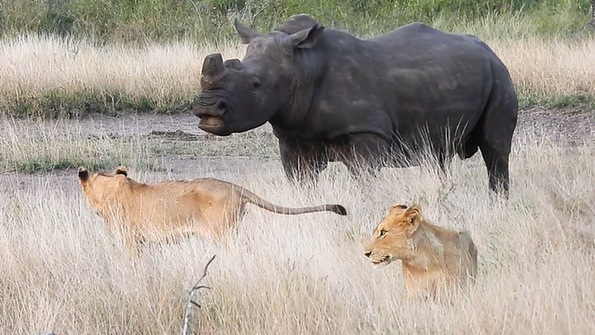
Black rhino establishes his dominance
The rhino entered the scene and successfully put the lions on edge.
The pride consisted mostly of lionesses, which had been lounging in the long grass, well hidden from view, when the rhino approached. Then, it was up onto their feet, with tails on high alert.
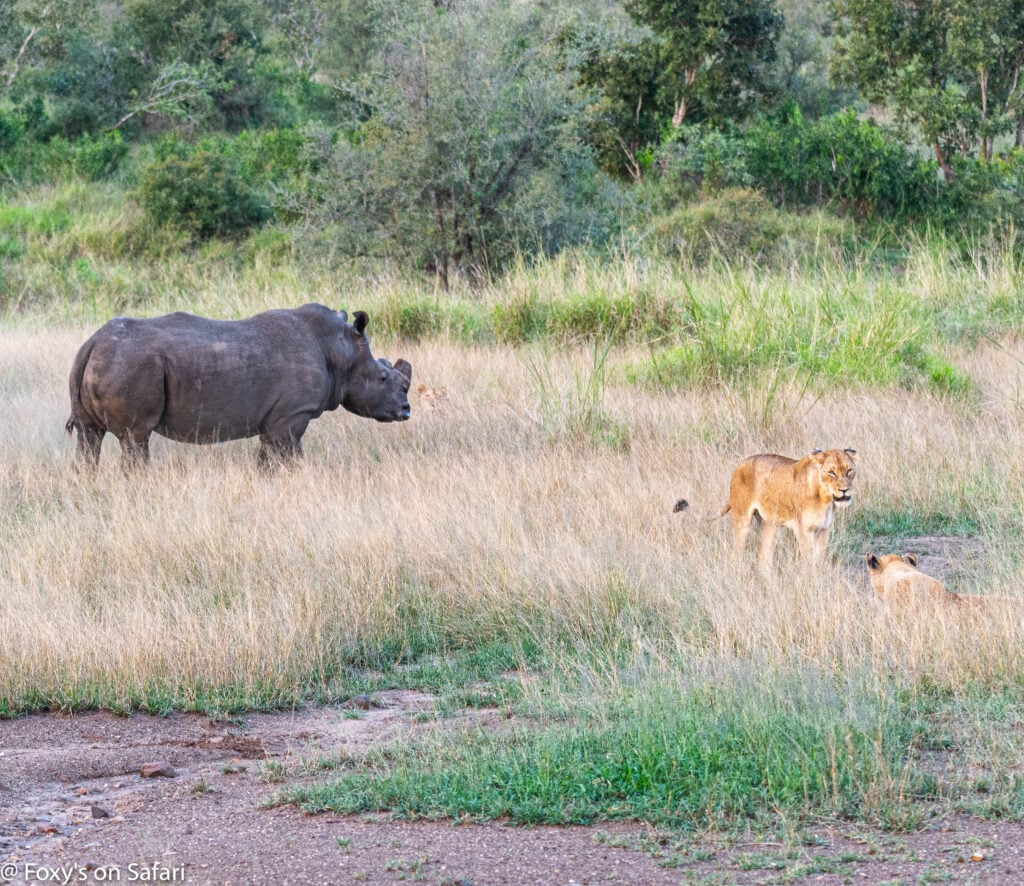
They quickly moved away from him, and he didn’t have to do much for this to happen. He simply showed up!
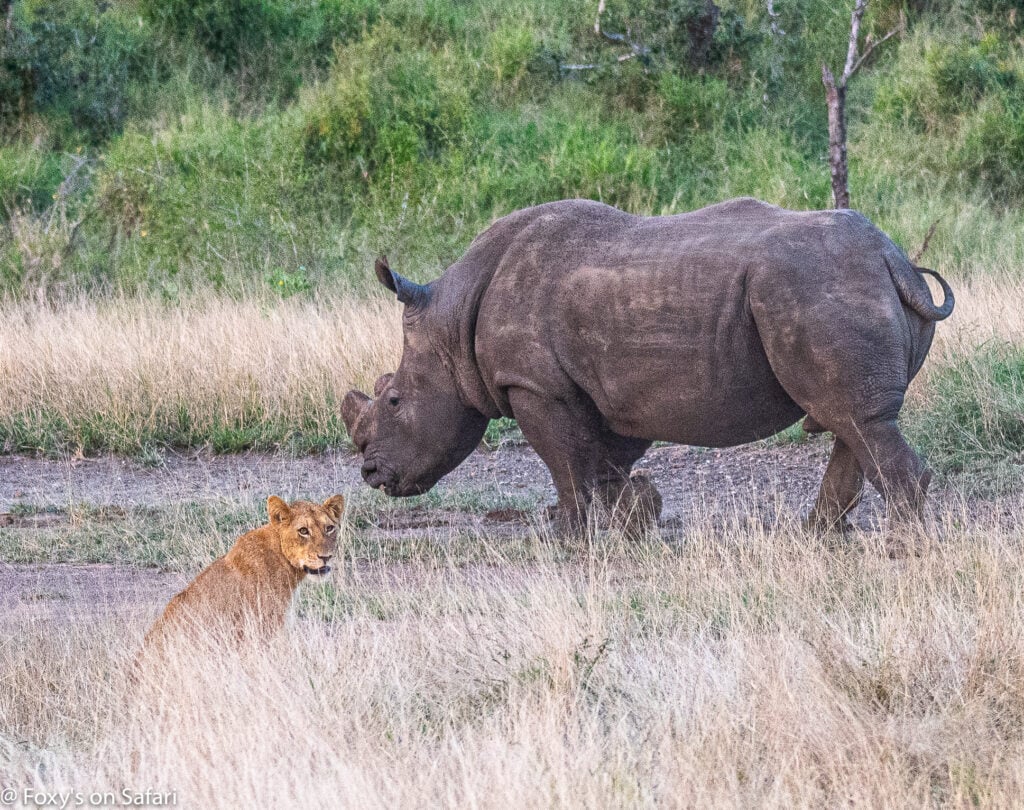
An encounter of mutual respect
While lions are formidable hunters, black rhinos are among the few land animals which even they will think twice about challenging. Their encounters with rhinos are more often related to territory than predation, with each species showing respect for the other’s power.
As this black rhino walked towards the lions, his power was immediately respected.
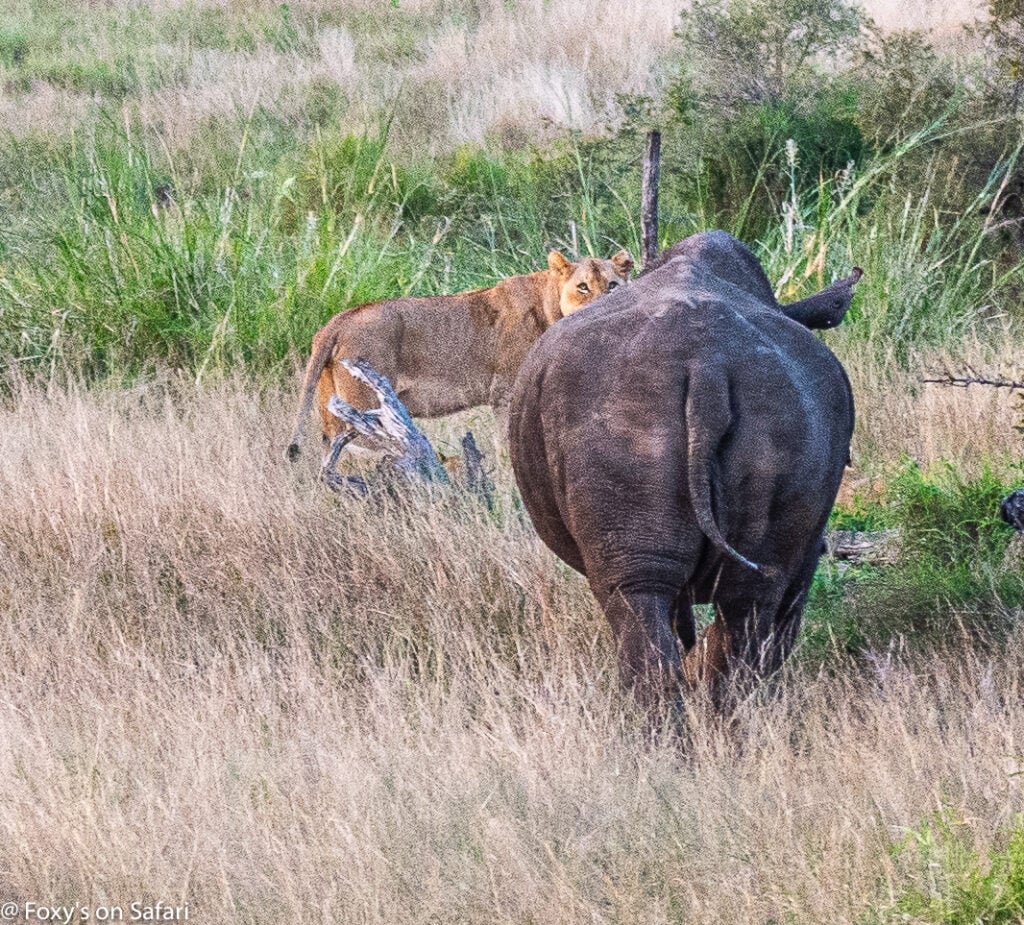
There were moments when the lions locked eyes with the large animal, however, these moments were fleeting. For the most part, the pride members quickly removed themselves from the rhino’s path.
Get our Best Sightings as they Come in
Lions tend to avoid adult rhinos, understanding the risk of approaching them. They may occasionally attempt to prey on young or weakened black rhinos, especially if other food sources are scarce. However, these attempts are rare and risky.
Lion prides would have to work together and be highly motivated to bring down a young or weakened rhino. This is because even a young rhino can cause serious injury or death to a lion with a well-placed charge or horn thrust.
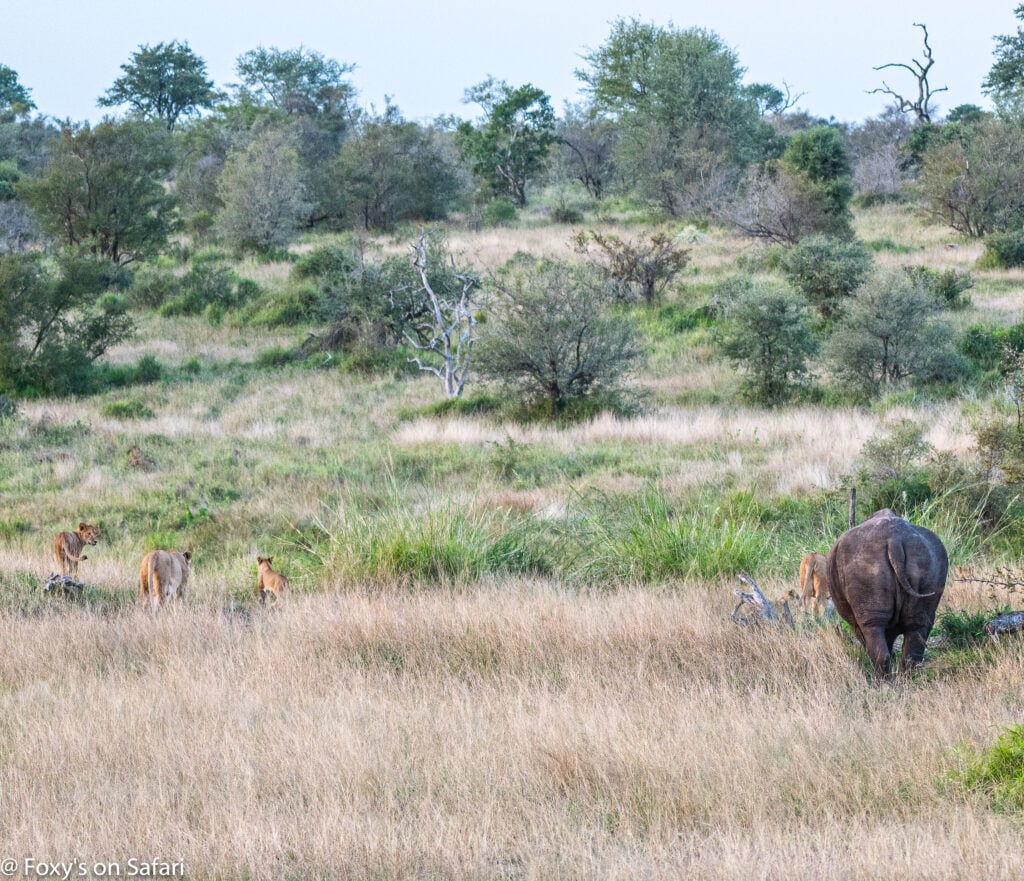
Most of the time, lions and black rhinos co-exist with mutual caution. Rhinos generally ignore lions unless they feel threatened. When they do interact, rhinos often assert dominance.
There are documented cases of rhinos charging at lions to drive them away, especially if they come too close. This clipping documents one of these moments. These lions were on the big guy’s turf and he quickly let them know it.
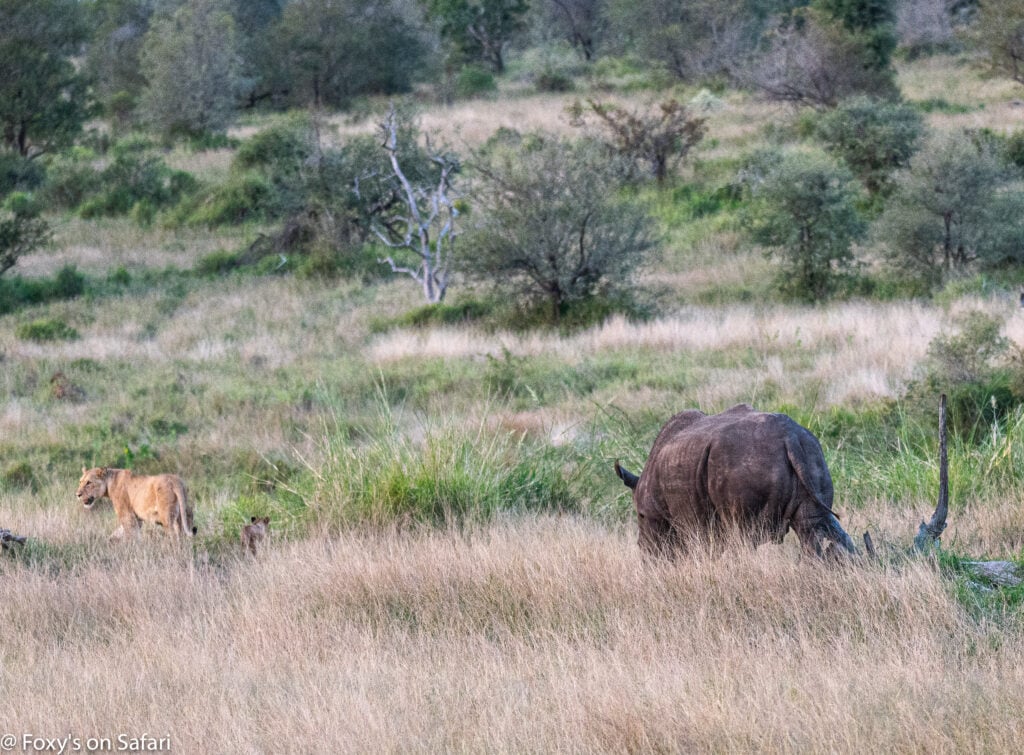
Rhino horns, a formidable weapon
While black rhinos have two horns, they use these for the same purposes. Their horns are used to defend themselves from threats, to show dominance and to dig for water or break branches.
The dominant, frontal horn usually measures around 40cm to 60cm. The rear horn will typically measure 20cm to 50cm. The horns are made from keratin, which is the same substance forming human hair and nails! Only the horns are much stronger than human hair and nails, and lions will keep their distance, understanding the threat these impose.
This fellow had lost part of his horn, possibly in battling with another rhino for dominance, or through impact with a tree or rock under stress.
Interestingly, once damaged, the horns can grow, but very slowly, at around 2cm to 7cm a year.
However, in spite of having lost a part of his horn, the lions remained fearful of him.
